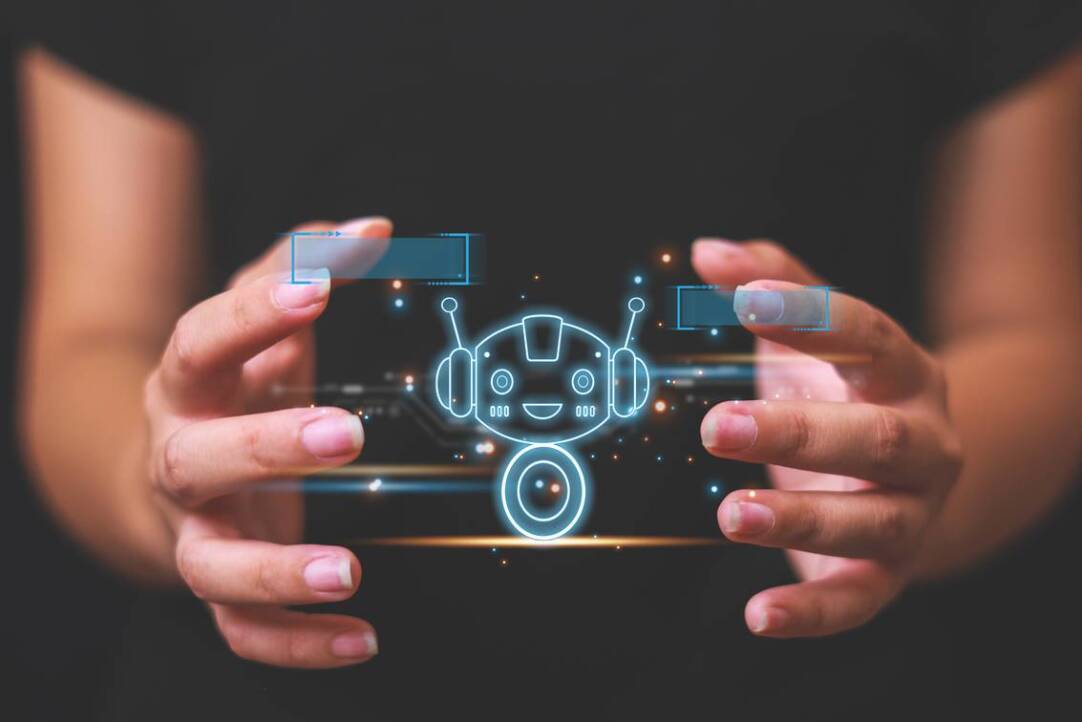‘We Need to Learn to Communicate with Artificial Intelligence Services’

An online course 'What is Generative AI?’ has been launched on the Open Education platform, which will help students learn more about how to properly communicate with neural networks so that they can perform tasks better. Daria Kasyanenko, an expert at the Continuing Education Centre and senior lecturer at the Big Data and Information Retrieval School at the Faculty of Computer Science, spoke about how generative AI works and how to create content with its help.

Daria Kasyanenko
— What is generative artificial intelligence?
— Generative models (GenAI) are a type of artificial intelligence that creates text, code, images, music, and other content in response to prompts.
Such models are trained on large amounts of data, learning by observing and comparing patterns. For example, if we show a model millions of pictures of a traffic light, it will gradually begin to understand that a traffic light is a rectangular box with red, yellow, and green lights.
Generative AI is mainly used for content creation. School students write essays and marketers draw up promotion plans—there are many options. But, at the same time, our ideas about artificial intelligence are greatly distorted by popular culture. It seems to us that, at best, it will solve all our problems, and, at worst, it will enslave us. Neither of these will happen in the near future.
Learn more about working with neural networks and using artificial intelligence on the portal (in Russian).
Existing models will not replace you at work (unfortunately or fortunately), but they can become a personal assistant in routine matters: for example, writing emails, proofreading a text, analysing tabular data, and summarising large texts or videos.
— How are texts generated? Why does AI, for example, produce false facts?
— Texts are created using language models. They learn from large volumes of text and can grasp the nuances of a language. The system receives a task (prompt), processes it and returns with a response. This model can be visualised as a kind of sage who has read all the books in the world and can reproduce the answer to any question from memory.
However, models have so-called hallucinations, and it is because of them that errors occur. For example, you ask a model to write an essay about the great writer Neuron Neuronovich Neuronov. The model will be happy to tell you what a brilliant writer he is, and even make a list of his books. This happens when AI lacks knowledge on a topic and, like a student who did not prepare for an exam, begins to lie. This can also happen due to random system failures.
— How are images generated? Why do images sometimes have artefacts?
— Images are generated from noise (empty image). Gradually, the model improves it using the prompt until it produces an image similar to what the user has requested.
Generated images usually have troubles while drawing people: extra arms and legs, complete facial symmetry (the uncanny valley effect), different eyes, strange smiles, and so on. The more detail the image has, the worse the model will cope with the task.
The simplest solution is to ask the model to draw a person in poses where arms and legs are not visible, or to draw a portrait.
— What is a human’s role in managing AI if we talk about an ordinary user?
— Now we need to learn to communicate with generative AI services. It may seem that asking questions in a chat and getting answers is quite simple. But to get a truly high-quality answer, you need to learn prompt engineering, that is, the art of correctly composing questions for a machine. An entire profession even exists called prompt engineer.
Currently, a great number of textbooks on prompts are available, where one can learn how to correctly compose queries in summary formats, positional formats, with context description and instructions description. This is a whole science.
During the course, we talk about how to use prompts and learn to better understand how they work.
See also:
HSE to Entrust Routine CPD Programme Development to AI
HSE University, together with the EdTech company CDO Global, is launching AI-based constructors to streamline the design of continuing professional development (CPD) courses. The new service will automate the preparation of teaching materials and assessment tools, significantly reducing the time and resources required of lecturers and instructional designers.
HSE University Becomes Absolute Leader in AI Alliance Ranking of Universities
TheAI Alliance Russia has announced a new ranking of Russian universities based on the quality of education in the field of AI. A total of 203 universities from 68 Russian regions participated in the ranking. HSE University was the first to join the highest A++ group.
HSE University and MTS Join Forces to Combat Deepfakes and Train AI to Create Bespoke Video Content
HSE University and MTS Web Services (MWS) have announced the launch of a series of joint research initiatives in the field of artificial intelligence technologies. These efforts aim to develop innovative solutions in cybersecurity, multimodal content generation, and big data analysis. The project’s leading institution is the HSE Tikhonov Moscow Institute of Electronics and Mathematics (HSE MIEM), under the overall coordination of the HSE AI Research Centre.
HSE University Brings Together Researchers at International AI Summer Institute in Shanghai
In early July 2025, the International Summer Institute on Artificial Intelligence in Education took place in Shanghai. It was organised by the HSE Institute of Education in cooperation with East China Normal University (ECNU). More than 50 early-career researchers and keynote speakers from nine countries—ranging from Russia and China to Canada and Singapore—gathered to share the latest findings from their work and to forge new international partnerships.
‘Economic Growth Without the AI Factor Is No Longer Possible’
The International Summer Institute on AI in Education has opened in Shanghai. The event is organised by the HSE Institute of Education in partnership with East China Normal University (ECNU). More than 50 participants and key speakers from over ten countries across Asia, Europe, North and South America have gathered to discuss the use of AI technologies in education and beyond.
Recommender Systems: New Algorithms and Current Practices
The AI and Digital Science Institute at the HSE Faculty of Computer Science hosted a conference focused on cutting-edge recommender system technologies. In an atmosphere of active knowledge sharing among leading industry experts, participants were introduced to the latest advancements and practical solutions in recommender model development.
AI to Enable Accurate Modelling of Data Storage System Performance
Researchers at the HSE Faculty of Computer Science have developed a new approach to modelling data storage systems based on generative machine learning models. This approach makes it possible to accurately predict the key performance characteristics of such systems under various conditions. Results have been published in the IEEE Access journal.
AI Predicts Behaviour of Quantum Systems
Scientists from HSE University, in collaboration with researchers from the University of Southern California, have developed an algorithm that rapidly and accurately predicts the behaviour of quantum systems, from quantum computers to solar panels. This methodology enabled the simulation of processes in the MoS₂ semiconductor and revealed that the movement of charged particles is influenced not only by the number of defects but also by their location. These defects can either slow down or accelerate charge transport, leading to effects that were previously difficult to account for with standard methods. The study has been published in Proceedings of the National Academy of Sciences (PNAS).
‘Services Must Be Flexible’: How Governments Can Use Artificial Intelligence
The HSE International Laboratory for Digital Transformation in Public Administration held a roundtable titled ‘Artificial Intelligence in Public Administration: Current Trends.’ Scholars from Israel, China, and Russia discussed which public services AI can enhance and what key factors must be considered when adopting new technologies.
Artificial Intelligence Improves Risk Prediction of Complex Diseases
Neural network models developed at the HSE AI Research Centre have significantly improved the prediction of risks for obesity, type 1 diabetes, psoriasis, and other complex diseases. A joint study with Genotek Ltd showed that deep learning algorithms outperform traditional methods, particularly in cases involving complex gene interactions (epistasis). The findings have been published in Frontiers in Medicine.


